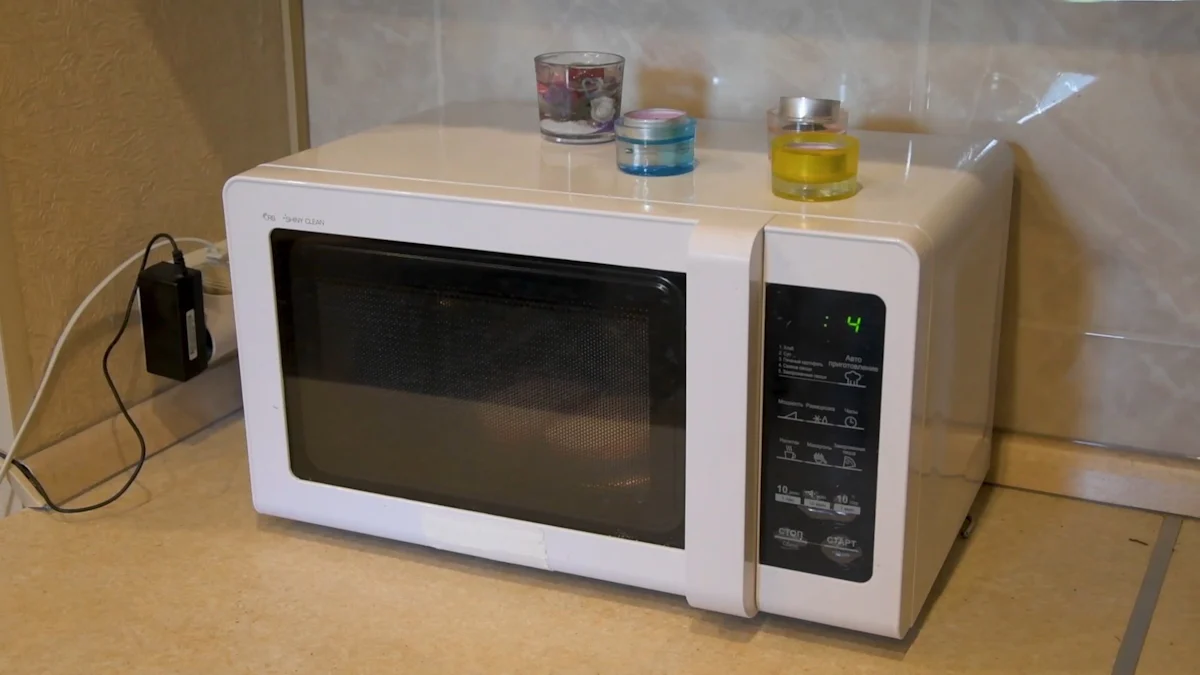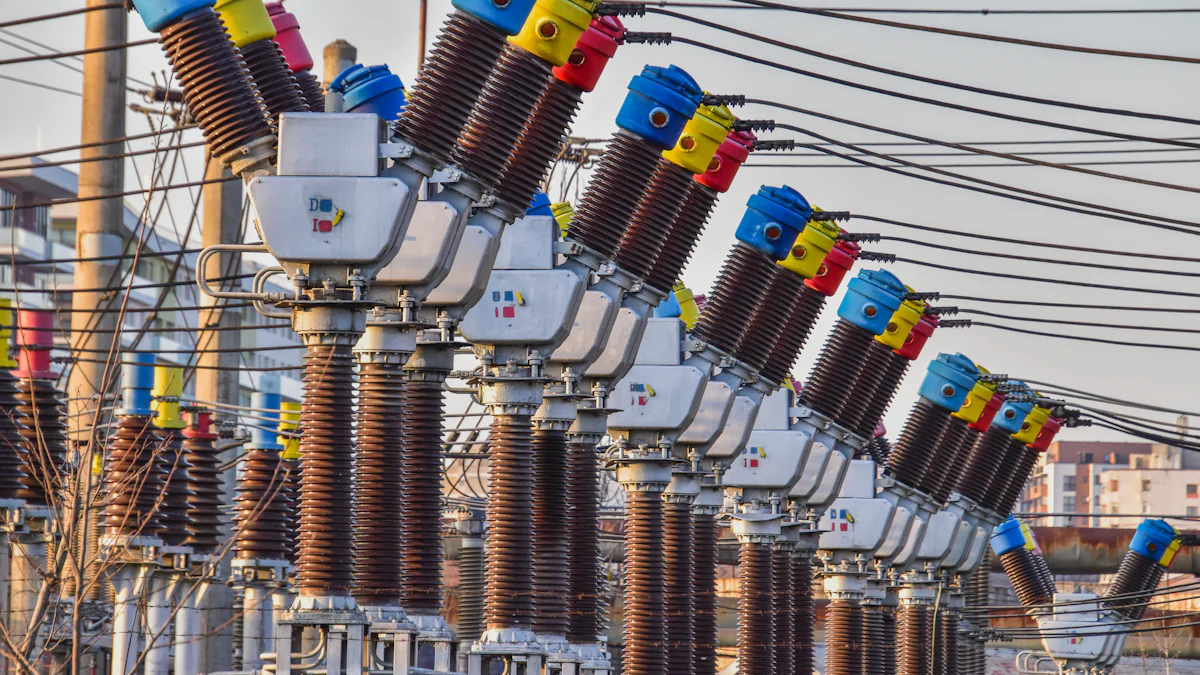Why Microwave Transformer Cores Are Welded in 2025

Microwave transformer cores are welded to stay strong and work well. These cores face a lot of stress when in use. Welding helps keep them steady and stops vibrations. Vibrations can cause noise or even break the core. Welding also lowers production costs, which helps make more microwaves. It ensures your microwave is safe and works properly. Welded cores last longer and are less likely to fail. This makes your microwave dependable for everyday use.
Key Takeaways
Welding makes microwave transformer cores stronger and more stable.
Welded cores shake less, making microwaves quieter and easier to use.
Welding cuts costs by removing the need for screws or clamps.
A welded core works better, heats faster, and saves energy.
Welding makes transformers safer by lowering the chance of overheating.
Welded cores are smaller and lighter but still strong.
Fixing welded cores is hard, but learning helps DIY repairs.
New welding methods, like laser welding, make transformers better.
Why Are Microwave Transformer Cores Welded?

Structural Strength
Microwave transformer cores face strong magnetic forces when working. These forces can make the core shake and weaken over time. Welding holds the core parts tightly together to make it stronger. This makes the core solid and stops it from bending or moving. Welding works better than using screws or clamps for stability. It helps the transformer last longer and work well under pressure.
The type of metal in the core also affects its strength. Low-carbon steel is cheap and easy to weld, so it’s common. Medium-carbon steel is stronger but harder to weld. High-carbon steel is very strong but can break easily, so it’s less useful. Welding joins these metals into one solid piece, making the microwave last longer.
Metal Type | Features | Good for Transformers? |
|---|---|---|
Low-Carbon Steel | Easy to weld, cheap, and flexible | Commonly used for transformer parts |
Medium-Carbon Steel | Stronger but harder to shape and weld | Good for bigger, tougher transformers |
High-Carbon Steel | Very strong but brittle and hard to weld | Not great because it can break easily |
Quieter Microwaves
You want your microwave to work without being too loud. Vibrations in the transformer core can make annoying sounds. Welding helps stop these vibrations, making the microwave quieter. Magnetic forces inside the core often cause these problems. Welding keeps the core parts steady, which reduces noise. This makes using your microwave more enjoyable.
A quieter microwave isn’t just nice—it works better too. Less noise means less stress inside the transformer, helping it last longer. Welding fixes this without needing extra parts, keeping the design simple and effective.
Saves Money
Welding is a cheaper way to make microwave transformers. It removes the need for screws, clamps, or glue. This lowers costs and makes building transformers faster. Companies can make more microwaves for less money, which helps buyers.
Welding might slightly lower efficiency, but it’s worth it. It creates strong, reliable transformers that last a long time. For making lots of microwaves, welding is the best and cheapest option. It helps meet the demand for affordable, good-quality microwaves.
Benefits of Welding Microwave Oven Transformers
Better Magnetic Performance
Welding helps the transformer work better by holding parts tight. When the core is welded, the magnetic field moves smoothly. This lowers energy waste and improves power transfer. Tight welding reduces gaps, keeping the magnetic flow strong. This helps your microwave heat food faster and use less energy.
Welding also stops the core from moving while working. If the core shifts, the magnetic field gets weaker. Stable cores make the transformer last longer and work well.
Safer and More Reliable
Welding makes transformers stronger and safer to use. It keeps the core from breaking during operation. Welded cores are less likely to have electrical problems. This prevents overheating or other failures, which is very important for daily use.
Welding strengthens the edges of the core parts.
It lowers the chance of electrical issues, making it safer.
Less noise from welding removes safety worries in loud spaces.
A welded transformer works well without sudden problems. This makes welding the best choice for building reliable transformers today.
Smaller and Stronger Design
Welding helps make transformers smaller and tougher. It joins the core parts tightly, so no screws or clamps are needed. This makes the transformer lighter and easier to fit in small microwaves.
Welding gives the strength needed for a small design.
It keeps the core parts aligned under heavy use.
Strong welds help the transformer last a long time.
A smaller transformer saves space and stays strong over time. Welded designs handle daily use without breaking, making them perfect for modern microwaves.
How Welding Affects Efficiency and Performance
Energy Flow and Magnetic Connection
Welding helps energy move better in microwave transformers. It keeps the core parts tightly together. This tight fit lets the magnetic field flow smoothly, wasting less energy. The layers in the core also block unwanted currents, keeping it efficient. Welding the edges doesn’t stop this because the currents stay inside the layers.
Welding also makes the core steady, which lowers noise. A steady core stops shaking that could mess up the magnetic flow. With good welding, your microwave heats food well and uses less power.
Heat Control and Core Strength
Transformers naturally make heat when they work. Welding helps control this heat by holding the core parts firmly. A firm core doesn’t move too much, so it makes less extra heat. This keeps the transformer safe, even when used a lot.
Welded cores spread heat evenly. Uneven heat can damage the core over time. Welding keeps the core strong and safe. This is very important for microwaves, which need to work well every day.
Balancing Currents and Strength
Welding makes the core strong but has small trade-offs. It might slightly increase unwanted currents, but this doesn’t matter much. The core’s layers are made to block these currents, so efficiency stays high.
The main advantage of welding is its strength. A welded core can handle daily use without breaking. Other methods, like clamping, might lower unwanted currents a bit more. But they don’t make the core as strong as welding does. For most uses, welding is the best choice. It creates a transformer that lasts longer and works better.
Welding vs. Other Ways to Build Microwave Transformers
Clamping
Clamping holds the transformer core with strong pressure. It keeps the metal layers in place without changing them permanently. This makes fixing or changing the core easier later. But clamping has problems. Over time, vibrations or wear can loosen the pressure. This makes the transformer less stable and less efficient.
Clamping also doesn’t stop the buzzing noise from the magnetic field. The metal layers vibrate at 50Hz or 60Hz, causing a loud hum. Welding joins the edges of these layers, which helps reduce the noise. While clamping is flexible, it’s not as reliable as welding for long-term use.
Welding reduces the 50Hz/60Hz buzzing sound from the core layers. This is especially helpful in high-power transformers like those in microwaves.
Screws and Bolts
Screws and bolts are another way to hold transformer cores. They are easy to use and allow adjustments or removal. This makes them great for small projects or DIY tasks. But screws and bolts can leave gaps between the metal layers. These gaps mess up the magnetic flow, lowering efficiency.
Screws and bolts also don’t stop vibrations completely. The way the layers stack often causes a loud hum. Welding fixes this by holding the layers tightly together. Screws and bolts also add weight and size, making them harder to fit in small microwaves.
Welding joins the edges of the layers without affecting energy flow.
The layers are made to block unwanted currents, keeping efficiency high.
Adhesives
Adhesives stick the metal layers together using glue. This creates a smooth and lightweight design. Adhesives can also reduce noise by stopping vibrations. But they have limits. Heat from the transformer can weaken the glue, causing it to fail.
Adhesives also make repairs harder. Once glued, the layers are tough to separate without damage. Welding, however, balances strength and repairability. Adhesives work for low-power transformers but aren’t good for high-power ones like in microwaves.
Each method has good points, but welding is the best. It combines strength, quietness, and efficiency. Welding ensures your microwave transformer works well, even with heavy use.
Repair and Modification of Welded Microwave Oven Transformers
Challenges of Fixing Welded Cores
Fixing a welded microwave core is often hard. Welding joins the metal layers tightly, making them hard to separate. Cutting the welds can weaken the core or make rough edges. This might mess up the magnetic flow and lower efficiency.
Heat during repairs is another problem. Tools like grinders or torches can overheat the core. Too much heat can change the metal, making it weak or less useful. Safety is also important. Sparks and sharp edges can be dangerous without proper gear.
Tip: Check the core carefully before fixing it. If it’s badly damaged, replacing it might be easier and safer.
Tools and Methods for Changes
To change a welded transformer, you need good tools. A rotary tool or grinder can cut welds cleanly. Be careful to avoid harming the metal layers. For smaller welds, a hacksaw works but needs more effort and care.
After cutting, you can use clamps or bolts to rebuild the core. This lets you test changes without making them permanent. Use a flat surface to keep the core straight when reassembling. Soldering tools are needed for wiring. They help attach wires firmly without loose ends.
Note: Always work in a space with fresh air when using tools. Metal dust and fumes can be harmful if breathed in.
Easier Options for DIY Projects
If fixing a welded core feels too hard, try other options. You can use a non-welded transformer. These are simpler to take apart and fix. Older microwaves or special stores may have them.
Another choice is building your own transformer. Buy core pieces and join them with clamps or glue. This gives you control and makes future fixes easier. But you’ll need to know basic transformer building and safety rules.
Reminder: Always stay safe when working with transformers. High voltage can be very dangerous, even for small projects.
By learning these challenges and methods, you can decide what to do. Fixing, changing, or replacing each has good and bad points. Pick what matches your skills and needs best.
The Future of Microwave Transformer Core Welding
Advances in Welding Technology
Welding has improved a lot and keeps getting better. Faster and more accurate methods are being developed. These help make strong and dependable transformer cores. For instance, laser welding is now more common. It uses focused light to join metal precisely. This lowers heat damage and keeps the core’s magnetic strength.
Robots are also changing how welding is done. Robotic welders work fast and consistently, making production cheaper. Factories may use more of these machines to meet demand. Better tools now give more control during welding. This keeps the core strong without hurting its performance.
New materials are also helping welding improve. Special alloys and coatings make joining metal easier. They also reduce problems like unwanted currents. These materials help transformers work better and last longer. As welding gets better, microwave transformers will become stronger and more efficient.
Trends in Transformer Design and Materials
Modern transformers are smaller, stronger, and cheaper to make. Welding helps achieve these goals by tightly joining metal layers. This makes transformers fit into today’s compact appliances. Microwaves especially need small transformers due to limited space.
Manufacturers now focus more on the materials used in transformers. Insulating metal layers is important to reduce energy loss. Welding can slightly affect this insulation but is still the best option. Designers are improving methods to balance strength and efficiency.
Another focus is on performance features like leakage inductance. Welding keeps the core tightly joined, improving performance. Loose parts can increase leakage, making transformers less effective. Designers are finding ways to make welding even better for these needs.
These trends show welding will stay important in making transformers. With better designs and materials, appliances will be quieter, stronger, and last longer.
Welding keeps microwave transformer cores strong and quiet. It helps stop noise from vibrations, making your kitchen nicer. Welding is cheaper than other methods, saving money. Manufacturers use it to make durable and sturdy transformers. Other methods exist but are less reliable and efficient. Fixing welded cores can be tricky if you work with them. For making many microwaves, welding is the best option. It ensures safety and long-lasting performance for your microwave.
FAQ
What is the purpose of welding microwave transformer cores?
Welding keeps the core steady while it works. It stops shaking, lowers noise, and helps the transformer last longer. This method also makes it safer and more efficient, which is why it’s great for modern microwaves.
Can you repair a welded transformer core?
Yes, but it’s hard to do. You’ll need tools like grinders or rotary tools to remove the welds. Be careful, as mistakes can harm the core or make it less effective. If the damage is bad, replacing the core might be simpler.
Why not use screws or clamps instead of welding?
Screws and clamps leave spaces between the core layers. These spaces mess up the magnetic flow, making it less efficient. They also don’t stop shaking, which causes noise and wear. Welding fixes these problems by holding the layers tightly together.
Does welding affect the transformer’s efficiency?
Welding slightly increases unwanted currents at the edges, but this doesn’t matter much. The benefits, like better stability and less noise, are more important. The core’s design keeps efficiency high even with welding.
Are welded transformers more durable than glued ones?
Yes, welded transformers are stronger and last longer. Glue can weaken when it gets hot, causing the core to fail. Welding makes a strong bond that handles heat and heavy use, making it perfect for powerful devices like microwaves.
Is welding environmentally friendly?
Welding uses fewer materials like screws or glue, which means less waste. New welding methods, like laser welding, also use less energy. These things make welding a better choice for the environment when making microwave transformers.
Can DIY enthusiasts work with welded cores?
Yes, but it takes skill and the right tools. Cutting welds and putting the core back together can be tricky. If you’re new to this, start with non-welded cores or easier projects to learn and gain confidence.
What tools do you need to modify a welded transformer?
You’ll need a rotary tool, grinder, or hacksaw to cut the welds. Use clamps or bolts to put it back together. A soldering iron is needed for wiring. Always work in a space with fresh air and wear safety gear to protect yourself.
Tip: Practice on old or scrap materials before working on a real transformer to avoid mistakes.
See Also
Essential Differences Between CR1620 And CR2032 Batteries
Understanding The Roles Of Circuit Board Components In Electronics
Exploring Various Capacitor Types And Their Unique Characteristics
